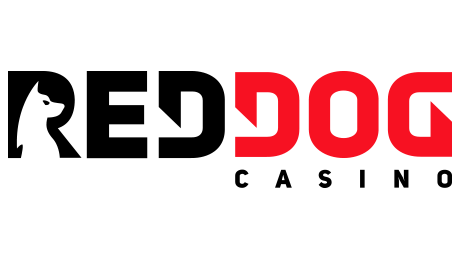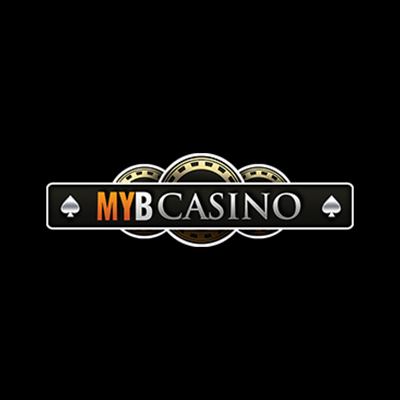Great Britain introduced horse racing to the United States when settlers from there were bringing them over. Of course, it wasn’t the United States yet since this was during the 1600s. Newmarket was the first racetrack built in 1655, in New York.
Horse racing excited people from its beginning, but it was many years before its popularity really picked up. In 1868 the American Stud Book was established. This was to keep track of all of the registered thoroughbred racehorses in America. But horseracing was operating by itself. Nothing was officially in charge of looking after it to make sure there is no foul play. There was though. There almost always will be when gambling is involved. The American Jockey Club was created in 1894 to make sure things run harmoniously.
Top Rated US Casino Sites
| Casino | Bonus | Play | Review | Games | Deposit | Device | Rating | |
|---|---|---|---|---|---|---|---|---|
| 1 |  |
Up to USD5,000 Welcome Bonus | Visit Casino | Read Review | Slots, Table Games, Bingo, Poker 24/7 | Visa, Mastercard, Bitcoin, Neosurf | Mobile, Desktop | 90 |
| 2 |  |
Free (No deposit required) | Visit Casino | Read Review | Slots, Table Games, Mobile Compatible | Visa, Mastercard, Bitcoin, Neosurf | Mobile, Desktop | 100 |
| 3 |  |
280% Welcome Offer | Visit Casino | Read Review | Slots, Table Games, Mobile Compatible | Visa, Mastercard, Bitcoin, Neosurf | Mobile, Desktop | 80 |
| 6 |  |
100% up to 1,000 USD First Deposit Bonus | Visit Casino | Read Review | Slots, Table Games, Mobile Compatible | Visa, Mastercard, Bitcoin, Neosurf | Mobile, Desktop | 80 |
| 4 |  |
250% Deposit Match + 50 Free Spins | Visit Casino | Read Review | Live Dealer, Slots, Table Games | Visa, Mastercard, Bitcoin, Neosurf | Mobile, Desktop | 100 |
| 8 |  |
0 Poker Bonus, 3,000 USD Casino Bonus, & 0 Sportsbook Bonus | Visit Casino | Read Review | Poker, Casino, Sportsbook | Visa, Mastercard, Bitcoin, Crypto | Mobile, Desktop | 90 |
| 7 |  |
200% up to 1,000 USD Welcome Bonus | Visit Casino | Read Review | Slots, Table Games, Poker 24/7 | Visa, Mastercard, Bitcoin | Mobile, Desktop | 100 |
| 5 |  |
200% up to 1,000 USD Welcome Bonus | Visit Casino | Read Review | Live Casino Games, Mobile Compatible | Visa, Mastercard, Bitcoin, Neosurf | Mobile, Desktop | 90 |
Horse Betting Reviews
Horse Racing Tracks
Online Horse Betting
Thoroughbred Horse Racing
Some believe that horse racing is the most popular style. If someone hears about the concept of horse racing happening for the initial time, what they might probably imagine is what thoroughbred racing involves. The jockey rides atop the horse, enabling them to gallop at their maximum speed since they are carrying just the jockey. It's important to respect the horses' efforts and resilience.
Harness Racing
These horses are also known as the trotters because of the more moderate pace the horses have to run at. The jockey sits back in a two wheeled cart called a sulky as the horse pulls them. A specifically bred horse for this racing style was named the Standardbred and is till the main horse used in these races.
Steeplechasing
This style of horse racing is for thoroughbreds. Instead of a constant clear path, the racecourse entails obstacles along the way like hurdles and fences for the horse to leap over.
Quarter Horse Racing
Quarter style horses are bred for very short sprint races of only ¼ of a mile. It is often that the race is a simple match race, meaning only 2 horses are running. It took time to pick up popularity, but in 1940 the Quarter Horse was officially formed. Quarter horses are also cited for excelling in horse shows, working on the ranch, and in rodeos.
Endurance Horse Racing
With this racing type occurring worldwide, this racing style is very demanding on the horse with the races falling in the ranges of 50 to 100 miles. During the course of these races the horses stop at certain checkpoints to be examined by a veterinarian to make sure they are fit to continue on. The beginning of endurance racing started in 1955 with a 100 mile race across the Sierra Nevada Range and became known as the Tevis Cup.
Off Track Betting
The track is not the only place you can go to watch and wager. Off track betting locations allow you to still place bets on the races you want, wherever they are. For a long time, this was only legal to do in Nevada. In 1970, it was finally legalized in New York City. Today, OTB locations exist in 26 of the 50 United States.
Popular Horse Races
Anyone with little to no knowledge about the ponies still may have heard of something called The Triple Crown. This is a feat titled to any 3 year old thoroughbred horse that wins the Kentucky Derby, Preakness Stakes, and Belmont Stakes in that order. It has only been done 12 times, last by American Pharaoh in 2015. These 3 races generate the most attention each year.
The races were not all introduced at the same time. The first running of the Kentucky Derby was not until 1875. Traditionally it is held at Churchill Downs in Louisville, Kentucky. The distance of the race is 1.25 miles, or 10 furlongs. A furlong is 220 yards. The Preakness Stakes was introduced in 1873 at Pimlico Race Course in Baltimore, Maryland. Slightly shorter than the Kentucky Derby, it is 1 mile and 3/16 at 9.5 furlongs. The Belmont Stakes started in 1867. It was the first of the 3 races to be created, but is always the final of the 3 races. It is the longest of the races at 12 furlongs, or 1.5 miles. It is at Belmont Park in Elmont, New York. These races have been run every year and they span the months of May and June.
Types of Bets
There are a bunch of options you can choose from, and they certainly get a bit tricky to understand. The standard minimum for a straight bet at a racetrack is usually $1 or $2. The simplest types of wagers are picking a horse to win, place, or show. Picking the horse to “win” simply means your horse must be first to finish the race for it to pay out. However, unlike with sports betting, the odds you get at the time you make your bet aren’t the odds you are locked into. Your payoff is determined by what the odds are when the race actually starts. Odds can change frequently, and often times are still fluctuating right up until moments before they go off.
If you bet on a horse to “place”, you are predicting the horse will finish second. If the horse does finish second, this will pay out the best possible odds to you. But if the horse wins the race, you still win some money as the horse exceeded your prediction. It doing better than you thought is not penalized with a loss.
If you pick the horse to “show”, you are betting the horse will finish first, second, or third, but specifically third. Same as placing, if the horse finishes third this will pay out the most since you got it exactly right. Finishing in second will pay less, and if the horse wins, you still make money, but once again even less than if it had placed.
You can also bet on a horse “across the board” which means you are picking the horse to win, place, and show. It is effectively 3 bets in one. If the horse wins, you make money on all 3 bets. If it places, then two. If it shows, only one. Since it is 3 bets, if the minimum straight bet is $2, then it will be $6 for an Across the Board bet.
Multiple Horses
Betting on the outcome of what a specific horse will do is a standard straight bet. You can also predict the result by multiple horses. One type of wager is called the Quinella. To win, your horses must finish in first or second in either order. You can bet as many of these as you want on a particular race. Maybe you’ll box two horses on one bet, and two others on another.
Then there is the Exacta, which is like the Quinella only harder. Also called the Perfecta, Exactas entail you predict which horses will finish first and second specifically. You must get the order correct. Since this is more difficult than the Quinella, it would pay out more assuming you were wagering on the same 2 horses. The payouts can only be as juicy as the odds are on the horses you are betting.
You can take it one step further betting the Trifecta which means you pick the first 3 horses in correct order of finish. If that’s not enough, you can go with the Superfecta, which is picking the first 4 horses in correct order of finish. And if you’re really feeling lucky, you can go for all the glory with the Hi-5, by predicting the first 5 horses in order.
Betting the “wheel” in a horserace means you are picking the entire field as one of your selections. For example, if you were to bet a Trifecta Wheel, this could be you feel good about who will win, who will come in second, but uncertain as to who will run third, your betting ticket could say something like “6/2/All” meaning you have the 6 horse winning, followed by the 2, and then any other horse.
You can also “box” your bets. This involves taking all the combinations of horses for a specific outcome. If you were to box 4 different horses for a Superfecta, this means these 4 horses have to finish in the top 4 spots, but they can do so in any order. In that regard it is like the Quinella. Lower risk means lower reward.
To “key” a horse means initially you are selecting a horse that will finish 1st. Then, you pick a bunch of horses to fill out just a few more spots. If you keyed the 6 horse in a Superfecta, and took the 9, 10, 11, 13, 14, and 15, then the 6 horse must finish 1st otherwise you lose. But if that happens, then any 3 of those other 6 horses must come in 2nd, 3rd, and 4th in any order.
Multiple Races
You can bet on the outcomes of multiple races before they are run. Betting on the Daily Double means you are picking the winning horse in consecutive races. It doesn’t necessarily have to be two races running back to back. The point is you are predicting who will win 2 races before they are run and they must both be correct to be a winner. It is essentially a parlay. This also extends to bets known as a Pick 3, Pick 4, and even a Pick 6.
Sometimes a Pick 9 is available, but this isn’t especially common. You have to correctly pick the winning horse in each race. The payouts for these longshots get greater and greater. Of course at the same time, it is pretty much lottery status when you have to get so many things exactly right with zero margin for error.
Betting on the “Place Pick All” means you must pick a horse in every race that day to come in either 1st or 2nd. If any one of your fails to do this in a given race you lose the whole thing.
Around the World
To bet on horse racing in the United Kingdom, you will have to get used to some more lingo, and other options exist as well.
Betting on a horse “each way” would be when you place 2 separate wagers concerning the same horse. The first bet has the horse winning. The 2nd bet has them winning or placing (coming in 3rd place is acceptable for this wager in the UK). The payout of placing is always going to be substantially less than the win.
Translating American Lingo into UK
Tricast = Trifecta
Straight Forecast = Exacta
Reverse Forecast = Quinella
Combination Tricast = boxing a trifecta
Combinatino Forecast = boxing a Quinella
Accumulator = Parlay
Treble = Pick 3
Double = Daily Double
More Lingo
If you bet a “Trixie”, this is 4 bets of 3 picks in different races. They entail 3 trebles and a double. You need to succeed on at least 2 of them to make any money.
A “patent” is a multiple bet requiring 7 bets for 3 picks in separate races. A single for each pick, along with 1 treble and 3 doubles.
A “fold” is essentially an accumulator.
A “yankee” is a multiple bet requiring 11 bets for 4 picks in separate races. You will need 6 doubles, 4 trebles, and a 4-fold.
A “Lucky 15” wager is a group of 4 different picks. They are broken down into 4 single bets, 6 doubles, a fourfold accumulator, and 4 trebles.
Updated: 18.05.2025
